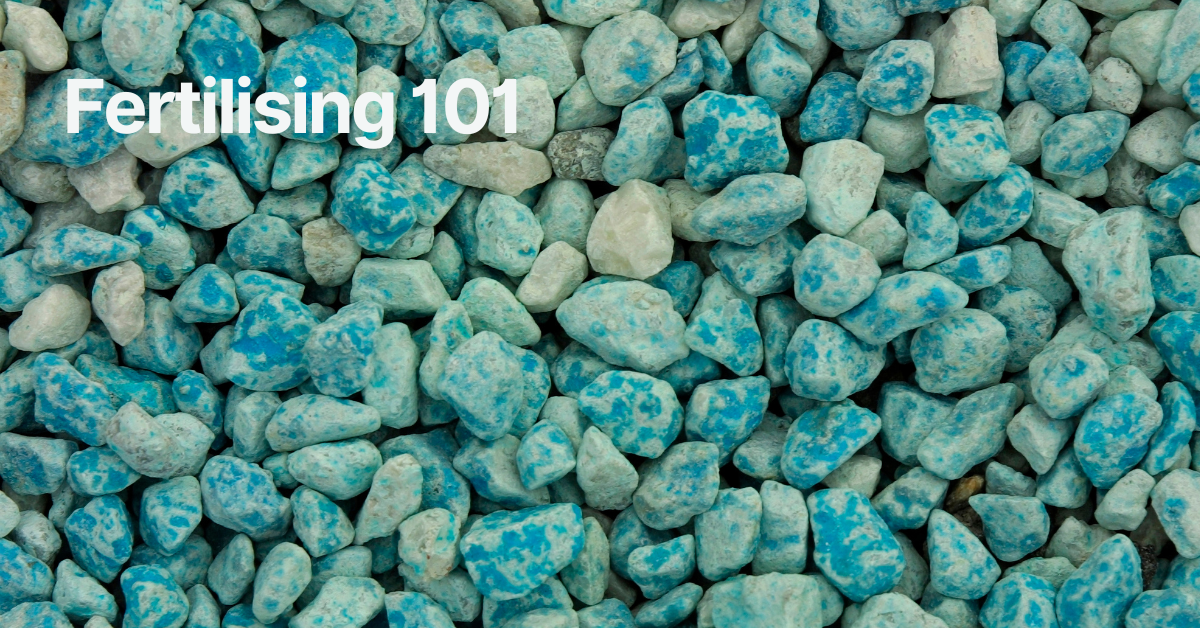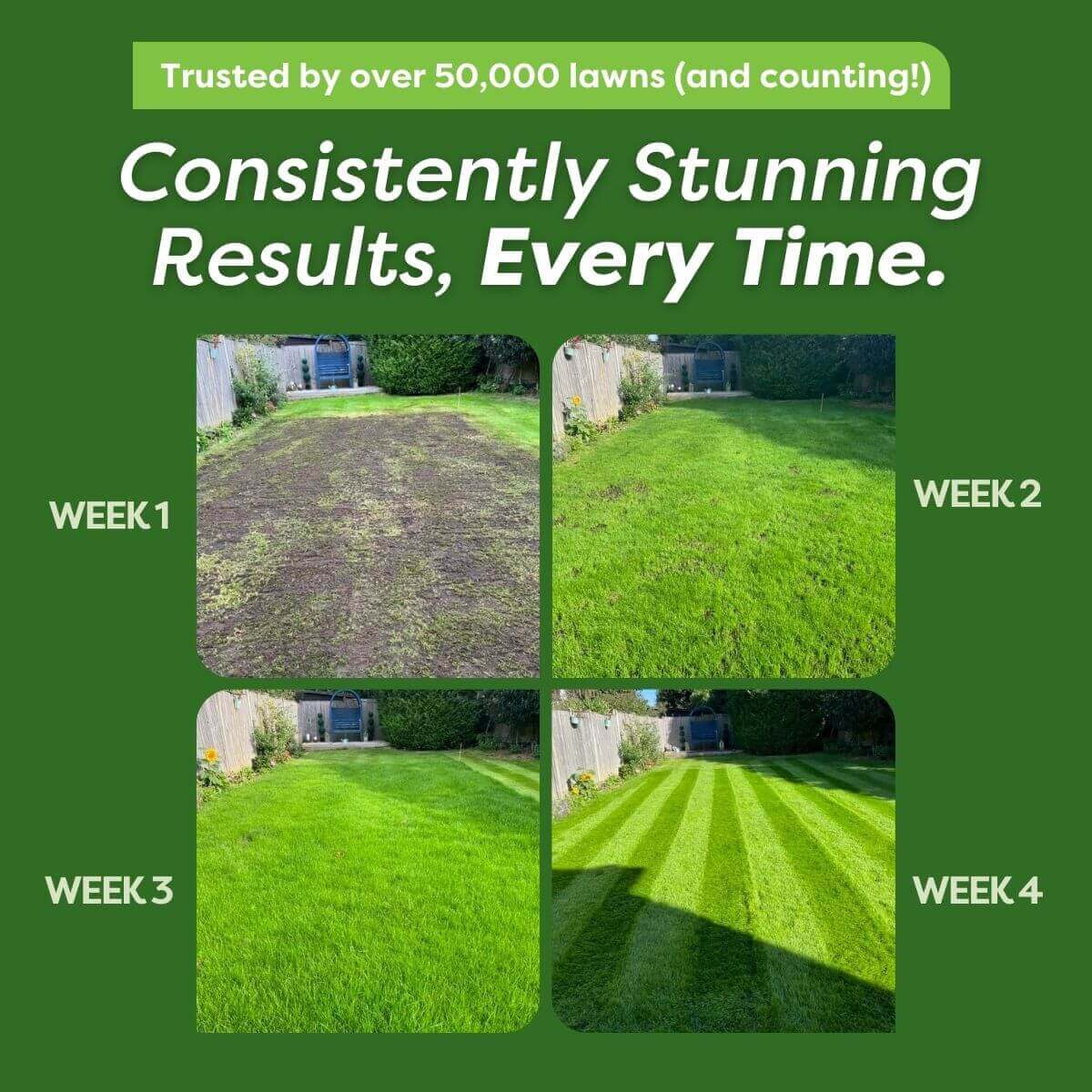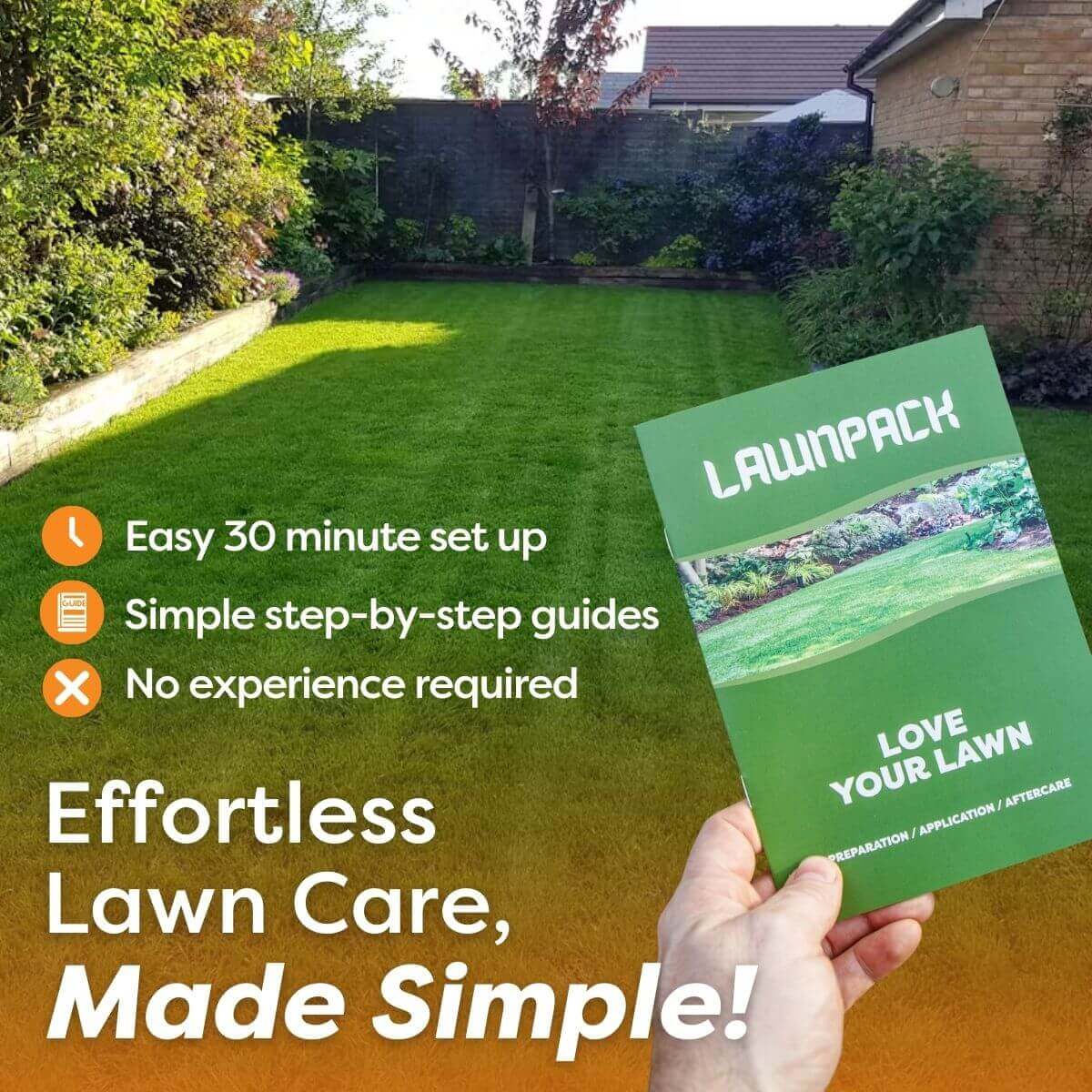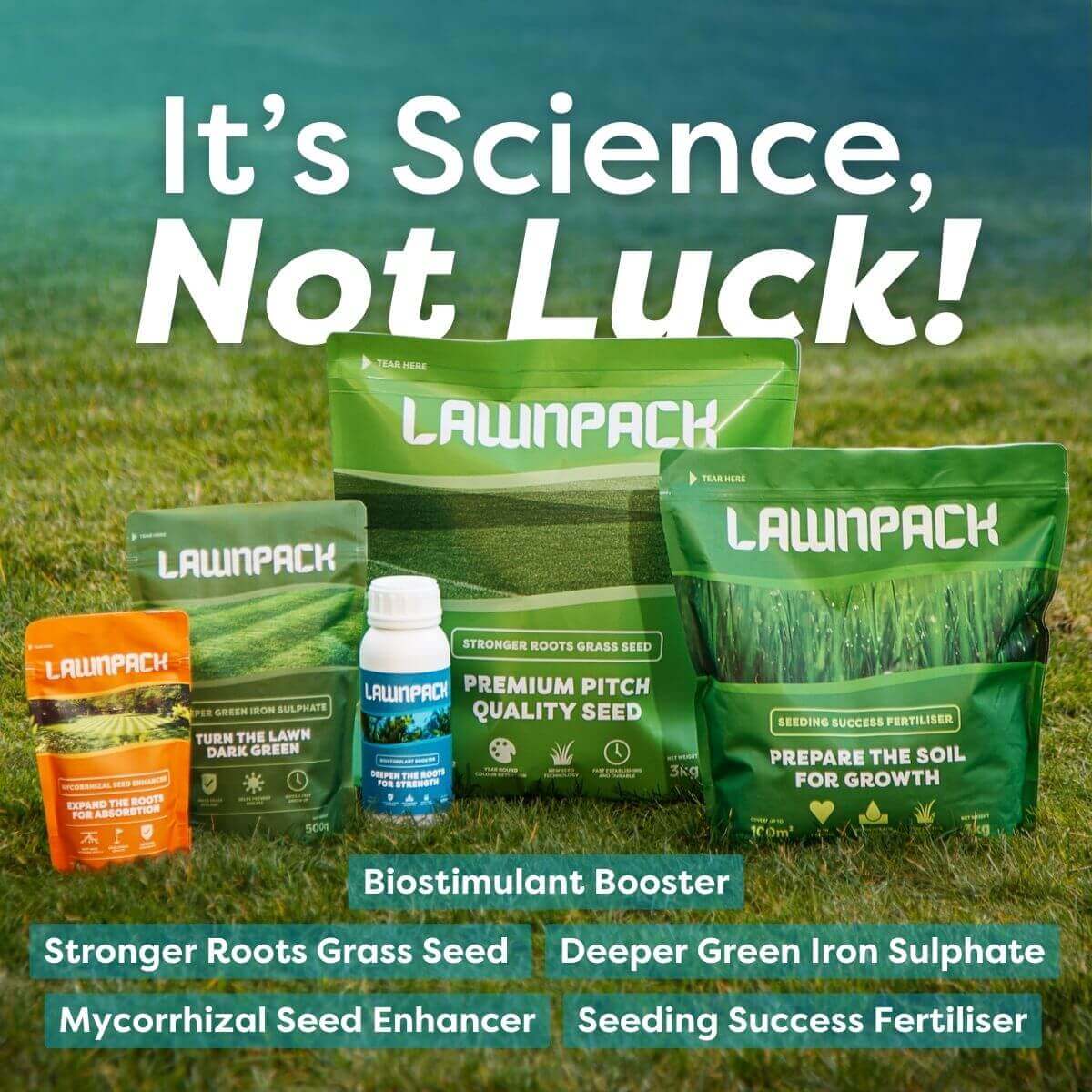
Feeding your lawn is one of the best things you can do for your lawn to help it stay healthy. However, did you know that the type of feed you use will depend on the time of year. This is one of the main reasons we like to steer people away from 4-in-1 products, as these cannot ensure you are applying the correct amount of nitrogen for the time of year. Fear not, it's not as complicated as you think and you'll see that as we work through our top fertilising tips in this article.
What is nitrogen?
You will notice that nitrogen is the main ingredient in most lawn feed, used to fertilise your lawn resulting in a green lawn by giving it a quick boost. This nutrient helps to plants to grow new leaves and to encourage strong roots. Most nitrogen is either organic or synthetic. However, these can also come in their own variants such as slow release fertiliser and quick release fertiliser depending on the requirements of the lawn at the time of the year.
Signs of nitrogen deficiency
There are many indications that your lawn is suffering from a nitrogen deficiency, I'll highlight some tell-tale signs here that most lawns suffering will look like:
Patches of dead grass
Yellowing leaves
Lack of green colour
Slow growth
Lawn disease (such as red thread)
Thin leaves
Spongey lawn roots
There is some cross over with other lawn problems such as an infestation so ensure to investigate properly.

Image of lawn suffering from nitrogen deficiency
Signs of too much nitrogen in lawn
This usually happens when too much fertiliser has been applied (such as when using a 4-in-1 product) or if the application has been uneven.
You will notice the following on the lawn:
Brown grass patches
Burned grass blades
Soil diseases
When should you feed your lawn?
For the healthiest lawn your lawn care regime should include regular feeding alongside regular mowing. Ideally you should try fertilise lawn twice a year at a bare minimum, however there are benefits to year round fertilisation. A great fertilising timetable would be once for each season: spring, summer, autumn and winter. Let's talk about the needs of your lawn in each season a little further.
Spring feed
Over winter your grass stops growing, which is why your lawn does not need mowing (although some choose to) over winter. Spring is the start of the growing season and your lawn is in desperate need of high dose of nitrogen to help it start actively growing again. Be careful not to apply in early spring as this could stress your lawn, we would recommend waiting until late spring as a good time to start feeding your lawn again. A suitable NPK would be 22-5-10 (not sure what this means? Don't worry I'll address this later).
Our Spring/Summer Booster Pack includes our Greener Growth Fertiliser which is great for the spring and summer months.
Summer feed
In summer your lawn is receiving much less rain and much more usage, from early summer to mid summer is a great time to apply a fertiliser. This will help it to be more resilient. Slow release fertilisers are ideal for summer as they won't cause such an increase in growth making mowing more manageable. A suitable NPK would be 19-3-9.
Autumn feed
We've been seeing a trend of some very warm September and Octobers of recent years so it might be worth holding off on an autumn feeding until the mid/end of October. An uptake in rain will do your lawn a world of good after some of the dry summers we have had, however an autumn fertiliser will help provide more nutrients before the winter months. A suitable NPK would be 10-5-10.
Ensure in the autumn months to remove fallen leaves from the lawn this will help to prevent moss particularly in shaded areas.
Winter feed
The purpose of a lawn fertiliser in winter is to help your lawn withstand the cold temperatures and frosts. This will mean your lawn has a better chance of surviving the winter and less dieback will happen. A suitable NPK would be 6-5-10.
Our Winter Protection Pack includes our Winter Protection Fertiliser, perfect for those cold months.
What is NPK?
The more you learn about lawns the more often you will see the term NPK pop up, these are simply the compounds that make up lawn fertilisers:
N - Nitrogen
P - Phosphorous
K - Potassium
How to apply fertiliser?
Applying fertiliser evenly is vital so that you do not scorch your grass and that the entire lawn receives essential nutrients. You can ensure a nice lawn by ensuring an even application. However, the type of application method you use does depend on the type of fertiliser you are using.
Applying liquid feeds
Liquid fertiliser will often need diluting with water using the recommend application rates on the instructions. It is vital you follow these, as we mentioned before over application can cause scorching which may require raking out and re-seeding. You can use a watering can or sprayer for liquid fertilisers. Liquid fertilisers are mostly quick release as they are quickly absorbed by the ground.
Applying granular feeds
As you can guess, granular fertiliser is a slow release as these larger granules will need to be dissolved over time by rain, watering etc. It is best to use a spreader for a granular feed, ensure to check the recommend setting for fertiliser application.
Once you have applied a lawn fertiliser ensure to give your lawn enough moisture, you'll want to keep the garden moist to ensure the nutrients are being dissolved into the soil. You can save time by using a sprinkler.


Image of spreader and and watering can
The Lawn Pack
Fertilising when overseeding?
So you're planning to overseed your lawn, roughly done through the months of March-October (based on our seed mix).
Before seeding you'll want to ensure you have removed any weeds and moss from the lawn. Prior to seeding if you are using a chemical weed killers you'll need to leave 8 weeks to ensure the weeds are killed and that the chemicals do not interfere with grass roots and stop germination. Then you can address the moss either using Iron Sulphate or scarifying.
Now you are ready to seed, you've completed all the preparation work in our guides so what comes next.
A great way to ensure the success of your seeding and to see strong grass plants is to applying a fertiliser alongside the seed. The best feed for seeding is one that will provide the right nutrients for growing grass plants.
Our Seeding Success Fertiliser has an NPK of 6-9-6 which is a high phosphorous content to encourage strong root growth. It has a low level of fast-acting nitrogen to help strong shoots and support healthy growth.
The Lawn Pack and The Lawn Pack Plus contain everything you need for successful seeding including our Seeding Success Fertiliser.
Where to buy lawn fertiliser?
Luckily for you, we know lawn care which is why we've created our lawn packs to provide the different nutrients your lawn needs at different times of the year. The Lawn Pack don't only sell our transformation packs, we also sell our maintenance packs to help you keep your green lawn all year round.
Have any questions on lawn feeding? Message us on Facebook, Instagram or email info@thelawnpack.co.uk.







